In the 2025 fiscal calendar, the countdown has already begun: companies whose financial year coincides with the calendar year have a period from July 1 to 25 to file Form 200 of the Corporate Income Tax, that is, twenty-five calendar days after six months have elapsed since the end of the year. For many innovative companies, this appointment is not only an obligation but also an opportunity to transform part of their investment in R&D&I into direct tax savings.
Understand the nature of the activity
The Law distinguishes, with very specific effects, between Research and Development (R&D) and Technological Innovation.
- Research is considered original, planned research aimed at discovering new scientific or technological knowledge.
- Development is understood as the application of these findings to create entirely new materials, products, or processes or to improve existing ones substantially.
Therefore, R&D activities are considered for corporate income tax, those that involve technological progress and some technical uncertainty. For example, the development of a prototype product that is not yet on the market, the creation of a new, more efficient manufacturing process, or the design of software that incorporates innovative technical solutions, beyond the maintenance or adaptation of existing programs. These activities must be well documented and respond to a systematic approach.
When the project does not reach the scientific frontier, but introduces an appreciable technological advance in internal products or processes, we talk about Technological Innovation. For Finance, the novelty must be substantial. It must be appreciated at the technological level, and above all, it is sufficient that it is new for the company itself, even if it already exists in the market, according to the "subjective" criterion of the Oslo Manual.
What percentage can actually be deducted
Deduction percentages are integrated into each project's tax narrative. For expenses strictly attributable to R&D, the rule allows for a 25% deduction; if this year's effort exceeds the average of the previous two years, the excess enjoys 42%. In addition, the salary of the research staff assigned exclusively to the project generates a complementary incentive of 17% and the material or intangible investments -specific machinery, software licenses, patents- add another 8%, provided that they are affected to the innovative activity.
For Technological Innovation activities, the single percentage is 12% of individualized expenses per project.
In the Corporate Income Tax return, these deductions may be applied up to 25% of the full adjusted quota for the year. This percentage may amount to up to 50% in the event that the deduction for R&D&I generated by the expenses of that year exceeds 10% of the full adjusted quota.
It should be remembered that, in terms of amount, the basis of deduction is formed only with direct costs: personnel expenses, materials, or external services strictly linked, depreciation of affected assets and, where appropriate, investments. Financial costs, structural overheads, or expenses that cannot be accurately attributed to the project are outside the incentive. And if the company has obtained subsidies for the same purpose, it must subtract them before calculating the deduction.
Finally, it should be remembered that, in the event that the company does not have sufficient quota to apply the deduction generated by R&D, there is the possibility of requesting its application up to 100% of the full quota and even the payment of the amount not applied. This mechanism, regulated in article 39 of the Corporate Income Tax Law, allows you to convert part of the deduction into direct income, provided that specific requirements are met and the limits established by the rule are respected.
Documentation, the key to success
Whoever wishes to apply the deduction must tell the story of the project with accounting and technical precision.
In practice this means:
- Carry out analytical accounting by cost centers or projects, so that each invoice and each payroll can be related to a specific milestone.
- Preserve memories, plans, prototypes, and records of software versions that show the technical evolution.
- Request, where appropriate, the motivated report of the Ministry of Science, a tool that, in principle, links the Tax Agency in the qualification of the project and, on the basis of deduction, reduces uncertainty in case of inspection.
An example illustrating savings
Imagine an industrial SME that, in 2025, invests €300,000 in developing a new control algorithm for its production line. Of this amount, €100,000 corresponds to the remuneration of two engineers dedicated exclusively to the project, and €50,000 to the acquisition of the necessary technological licenses. In this case, the deduction for R&D could reach approximately €98,000, applying 25% on the general basis of R&D expenses, an additional 42% on the excess over the average of the previous two years (if any), and the additional percentages of 17% for research personnel and 12% for some aspects of fixed assets. This amount is directly subtracted from the full share of Corporate Income Tax, and in many cases, it is an effective way to finance innovation indirectly.
Framework 2025: reduced rates and other synergies
The current fiscal context further enhances the incentive. From January 1, 2025, micro-enterprises – with a turnover of less than one million euros – are taxed at 21% on the first €50,000 of the base and at 22% on the rest, with a downward trend until 2027. This rate reduction, added to the deductions for R&D&I, increases the ability of many companies to monetize technological investment without straining the treasury.
When innovation becomes a tax advantage: the decisive step
Deductions for R&D&I are not a mere accounting entry: they are a strategic tool to finance innovation and improve competitiveness. The success, however, lies in anticipating the story – identifying projects, tracing expenditure items, and collecting technical evidence – and in aligning that story with the criteria that the Tax Administration expects to find.
At Certus, we help companies navigate this process with confidence. If your company is finalizing the declaration of Companies and believes that part of its technological effort can become tax savings, this is the time to act.
Innovating requires investment, but paying more taxes than necessary should not be part of the process. Contact us, and we will help you transform your technological developments into tangible and measurable tax savings.



